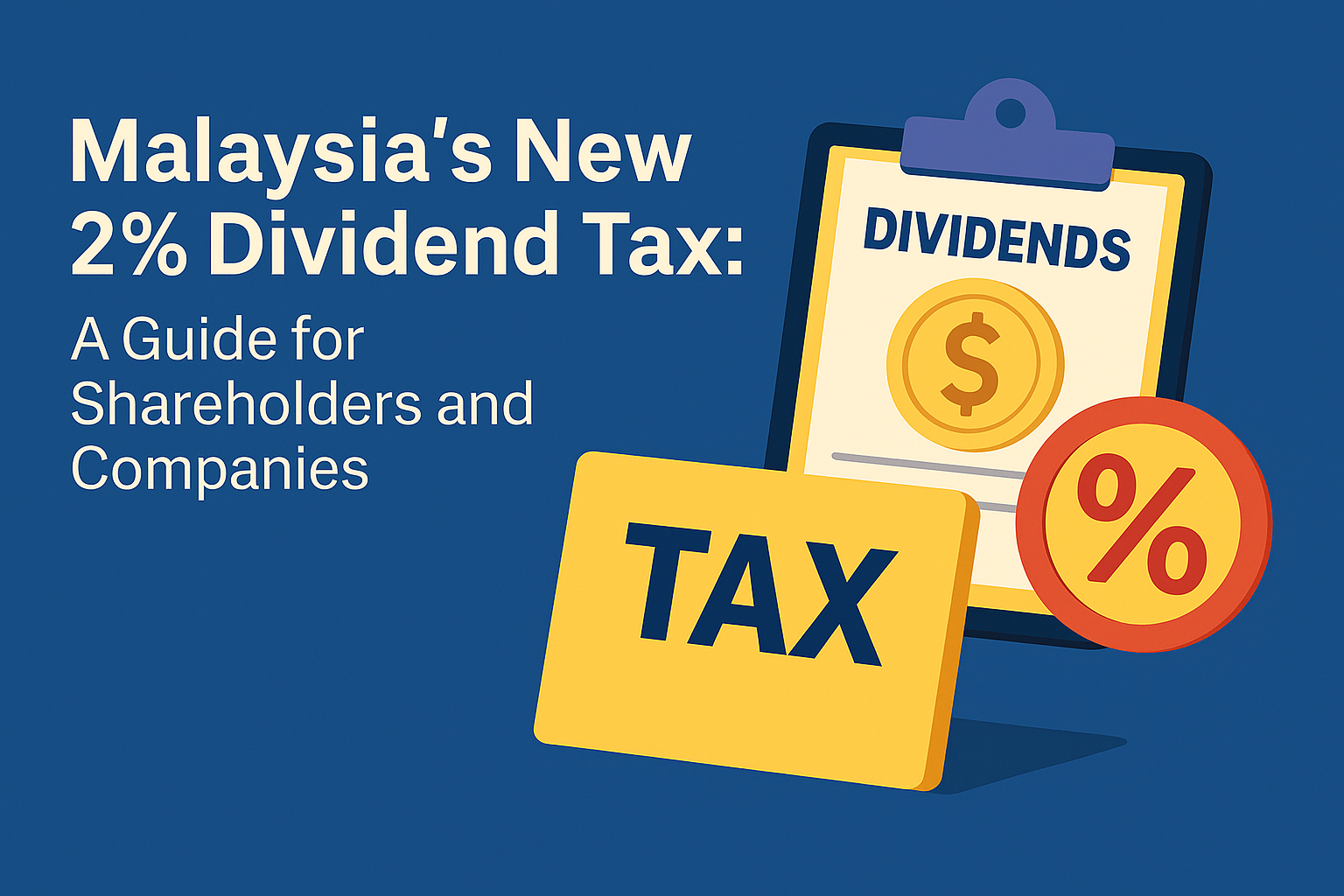In a major policy shift affecting high-income individuals, the Malaysian government has introduced a new tax on dividend income, effective from the Year of Assessment (YA) 2025. This move modifies the long-standing pure single-tier tax system.
Under the new rule, dividend income received by individuals exceeding RM100,000 will now be subject to an additional 2% tax. However, the calculation is not straightforward, and several key exemptions apply. This guide, based on the latest clarifications from LHDN, will break down what every shareholder and company director needs to know.
1. Who is Affected by the New 2% Dividend Tax?
This new tax is specifically targeted at individual shareholders who receive a large amount of dividend income within a calendar year.
- The Threshold: The tax applies only to the portion of your statutory dividend income that exceeds RM100,000 for the year of assessment.
- Recognition of Dividend: A dividend is considered income for YA 2025 if it is declared or received within the 2025 calendar year.
2. How the Tax is Calculated: It’s Not a Simple 2%
This is the most critical point of confusion. You cannot simply take your dividend amount over RM100,000 and multiply it by 2%. The actual tax is calculated on your “chargeable dividend income.”
- The Principle: The calculation involves a formula (
A/B x C) that apportions your personal tax reliefs (like the RM9,000 self-relief) proportionally between your different sources of income (e.g., your employment salary and your dividend income). - The Impact: This means only a portion of your personal reliefs is used to offset your dividend income before the 2% tax is applied. As shown in the example calculation provided in official guidelines, this results in a final tax amount that is different from a simple 2% calculation.
Key Takeaway: The calculation is complex and requires a proper tax computation. Do not assume the tax is simply 2% of the amount exceeding RM100,000.
3. Crucial Exemptions: Which Dividends Are NOT Taxed?
Fortunately, LHDN has clarified that many common types of dividends remain fully exempt from this new tax. These include:
- Dividend income from sources outside Malaysia.
- Dividends distributed from the profits of companies that have been granted pioneer status or reinvestment allowances.
- Dividends from the tax-exempt profits of shipping companies.
- Dividends distributed by co-operative societies.
- Dividends declared by closed-end funds.
- Dividend income received by residents from Labuan entities.
- Profit distributions by key national funds like the Employees Provident Fund (EPF), Armed Forces Fund Board, Amanah Saham Nasional Bumiputera (ASNB), or any other unit trusts.
What This Means for You
- For Individual Investors: You must now track your total non-exempt dividend income for the year. Keep all dividend vouchers, as they are your primary proof of income and its tax treatment. If your total exceeds RM100,000, you must declare it in your annual tax filing.
- For Companies Paying Dividends: Your responsibility is to issue clear and accurate dividend vouchers. This document is now more critical than ever for your shareholders to correctly file their taxes.
Navigating the New Tax Landscape
Understanding the tax implications of both paying and receiving dividends is a key part of wealth management and corporate finance. The introduction of this new tax adds another layer of complexity that requires careful planning.
At SMONE, our Tax Compliance services can help you understand how this new dividend tax affects your personal tax return. For our corporate clients, we ensure your dividend distributions and voucher preparations are fully compliant with the latest regulations.
Contact us today for expert tax advisory.
(Disclaimer)
This article is for general informational purposes. It does not constitute legal or tax advice. Please consult with a qualified tax professional for advice tailored to your specific situation.


